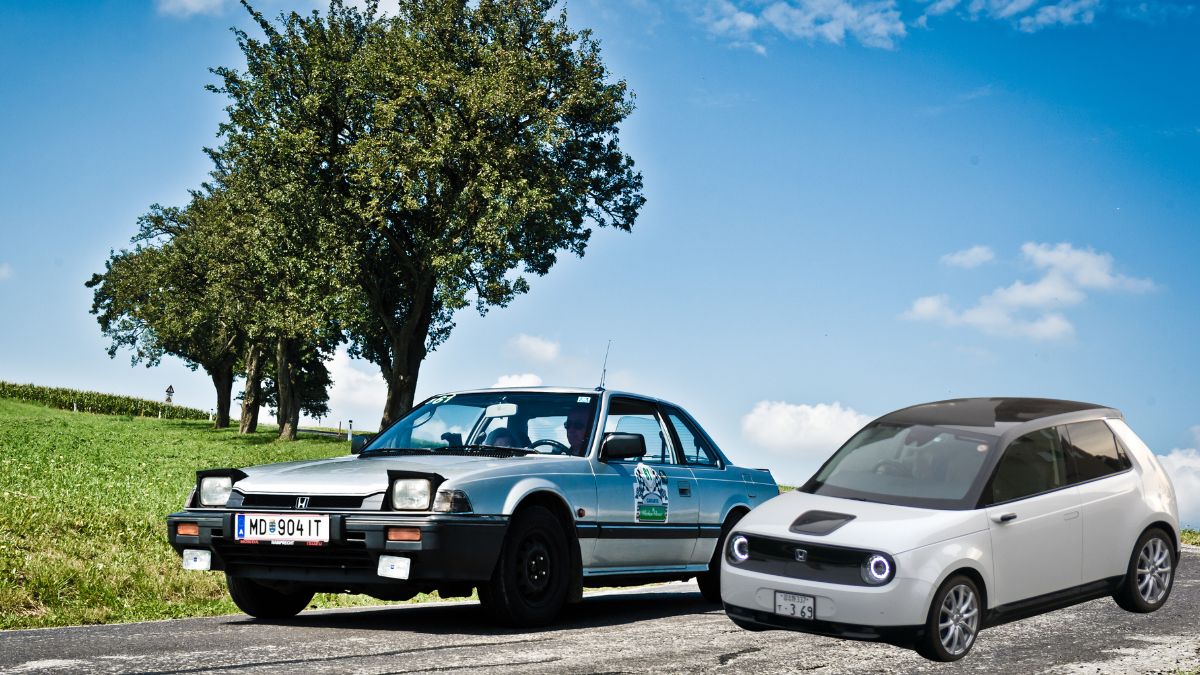It builds some of the most reliable cars in the world, but cannot “force” its customers


The landscape of the automotive industry is evolving in different directions depending on where you look. Some manufacturers, like BMW, are now selling as many electric cars as Tesla[1] (at least temporarily in Europe). However, other companies like Mercedes-Benz and Ford have slowed down their ambitious plans for electric vehicles.
And then there's Honda, which believes that "you can't force customers to change their minds[2]," although they don't deny the obvious reality of the situation. ADVERTISEMENT During the recent Monterey Car[3] Week in California, USA, Honda America's President and CEO, Kazuhiro Takizawa, addressed his company's concerns regarding the transition to electric vehicles.
The three main problems why electric vehicles are not being sold
According to Takizawa, while the adoption of electric cars is "steadily increasing," the growth of this market is still hindered by a weak infrastructure.
This lack of robust infrastructure makes many potential customers hesitant to make the switch.
- Infrastructure Weakness: The current infrastructure for electric vehicles is insufficient, discouraging potential buyers.
- Customer Mindset: Changing customer opinions and preferences is a significant hurdle.
- Market Dynamics: Different regions are experiencing varied rates of adoption, influencing manufacturers' strategies.
As the industry continues to navigate these challenges, it remains to be seen how each manufacturer will adapt and thrive in this rapidly changing landscape. ADVERTISEMENT "You can't force customers to change their minds," stated Takizawa, highlighting that the lack of charging stations, especially in less urbanized regions like the American Midwest, limits the transition to electric vehicles.
According to Takizawa, while incentives can encourage people, "even with incentives, they won't switch from combustion vehicles to electric ones" without sufficient infrastructure.
Challenges of Electric Vehicle Adoption in the Midwest
The Midwest, a region in the United States encompassing twelve states in the central-northern part of the country--Illinois, Indiana, Iowa, Michigan, Minnesota, Ohio, Wisconsin, North Dakota, South Dakota, Kansas, Missouri, and Nebraska--faces significant hurdles in the adoption of electric vehicles (EVs). In most of these states, EVs account for around 4% of registrations; in some states like South Dakota, they don't even reach 2%. These figures starkly contrast with the 26% in California or the 20% in the District of Columbia.
Despite these challenges, the potential for growth in EV adoption in the Midwest remains high. With improved infrastructure and continued incentives, the transition to electric vehicles can become a more viable option for many residents in these regions. The executive from the Japanese company highlighted that, although the charging infrastructure is expanding, it is doing so at a slow pace, which prevents a faster shift.
Shinji Aoyama, head of Honda's electrification and strategy, emphasized that the transition to electric vehicles in the United States will be gradual, marked by many steps and adaptations. He explained that the more electric vehicles expand, the faster the necessary ecosystem to support them will adjust.
The Gradual Transition to Electric Vehicles
Aoyama mentioned, "The slowdown in the electric vehicle market is not unexpected because, as the number of electric vehicles in circulation increases, the ecosystem will adapt more quickly." However, he acknowledged that transforming the deeply rooted internal combustion engine ecosystem into one that revolves around electric vehicles is a "complete social change," and thus, it may take time.
Challenges in the Ecosystem Transformation
- Slow Pace of Charging Infrastructure Expansion: The charging infrastructure is growing, but not fast enough to support a quicker transition.
- Gradual Adjustment: The ecosystem will need to adapt step by step as more electric vehicles enter the market.
- Deeply Rooted Combustion Engine System: Changing from a combustion engine-based system to an electric vehicle ecosystem is a significant societal shift.
In conclusion, while the move towards electric vehicles is inevitable, it will require patience and continuous adaptation. The more we embrace electric vehicles, the quicker the ecosystem will develop to support this necessary change.
Despite the current challenges, Aoyama emphasized Honda's long-term vision, where battery electric vehicles (BEVs) will play a crucial role in achieving carbon neutrality. According to the executive, BEVs possess the most effective technology for reaching carbon neutrality, but this process must advance "step by step" with the hope that the electric ecosystem will evolve gradually.
Honda's Commitment to Carbon Neutrality
The company has set an ambitious goal to achieve carbon neutrality by 2050 across all its products and corporate activities. This goal is unattainable without the integration of electric vehicles.
It represents a monumental shift for one of the leading manufacturers of internal combustion engines, whose propulsion systems are used in a wide array of sectors and applications, from motorcycles and cars to boats, machinery, and electric generators.
ADVERTISEMENT
Transitioning to a Greener Future
Honda's journey towards carbon neutrality involves:
- Developing and enhancing battery electric vehicle technology
- Gradually evolving the electric ecosystem
- Setting a 2050 target for complete carbon neutrality
- Transforming its diverse range of products and activities
As Honda navigates this transformative path, it remains committed to pioneering advancements in electric vehicle technology and steadily progressing towards a sustainable future.